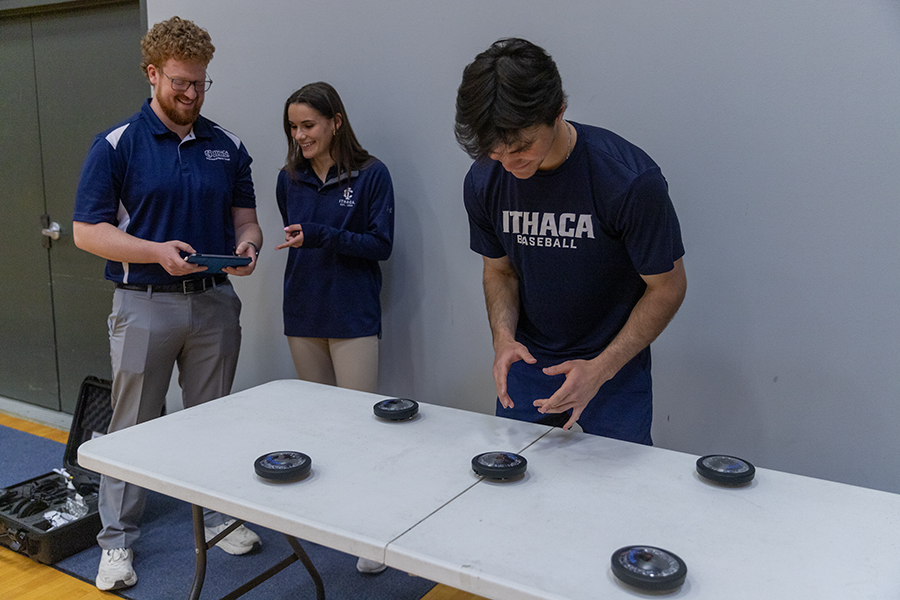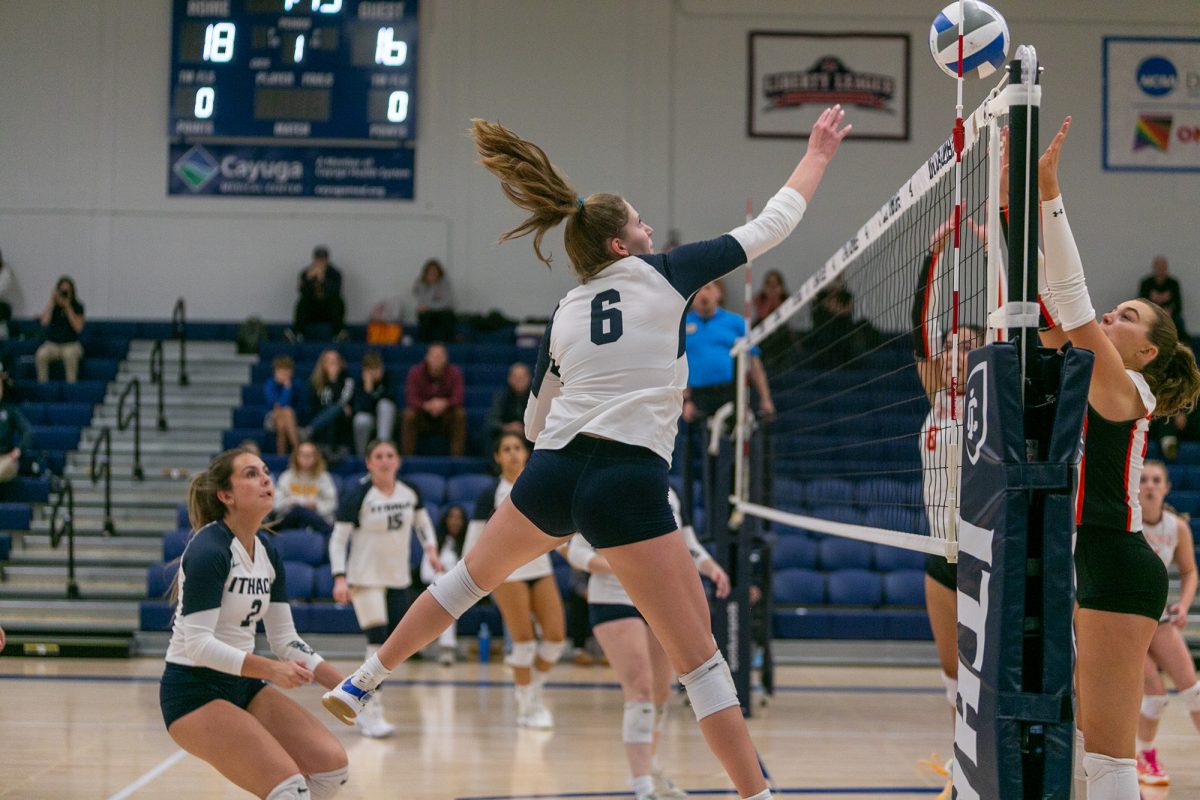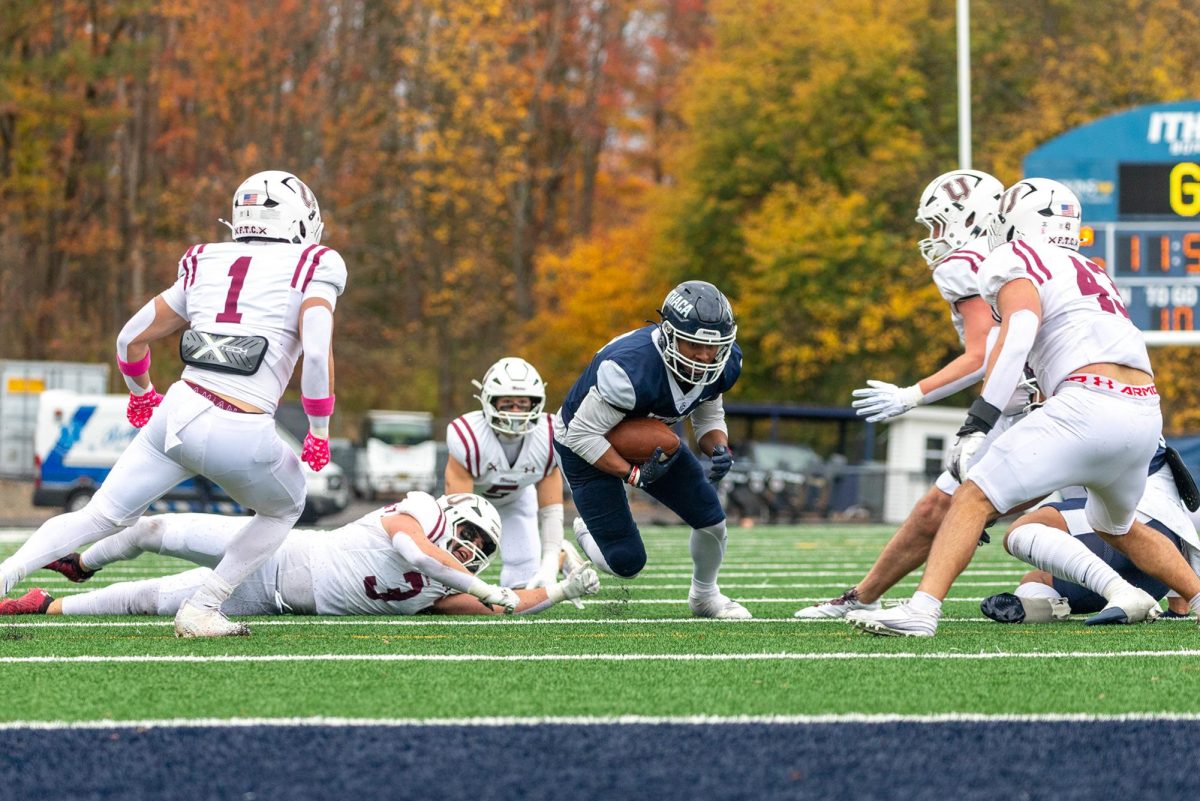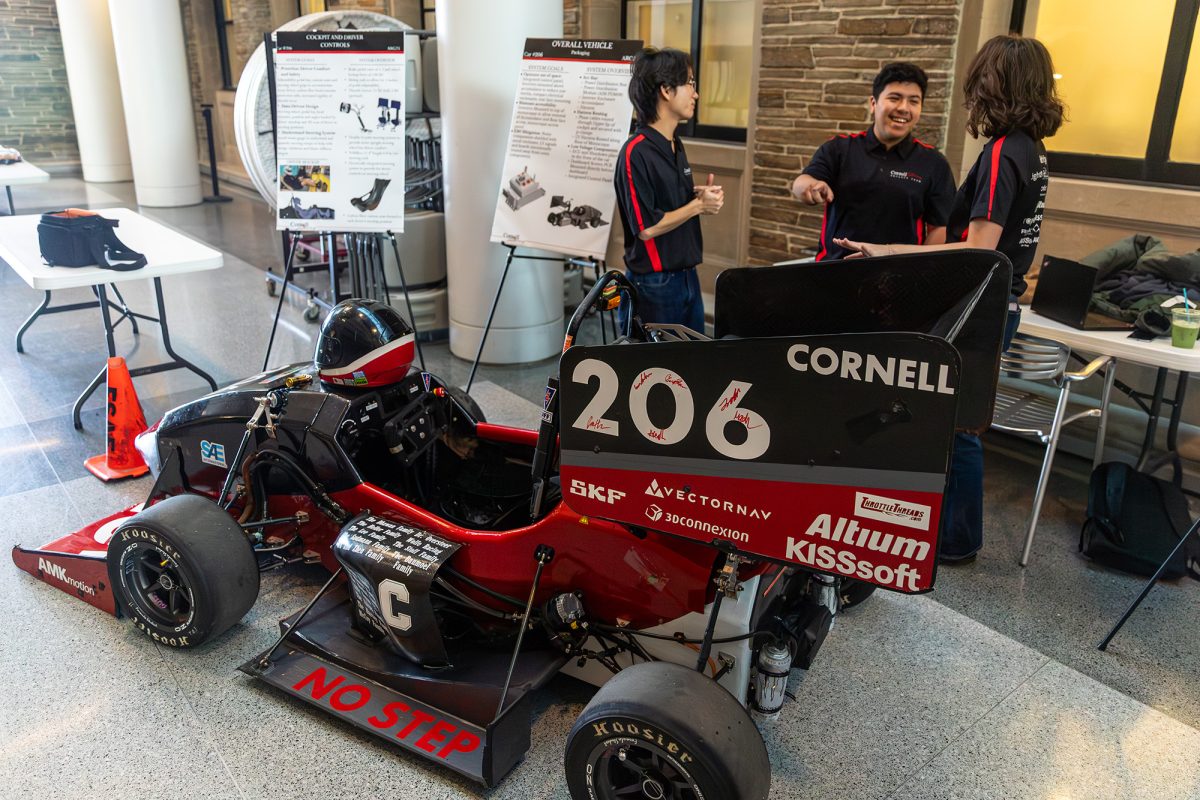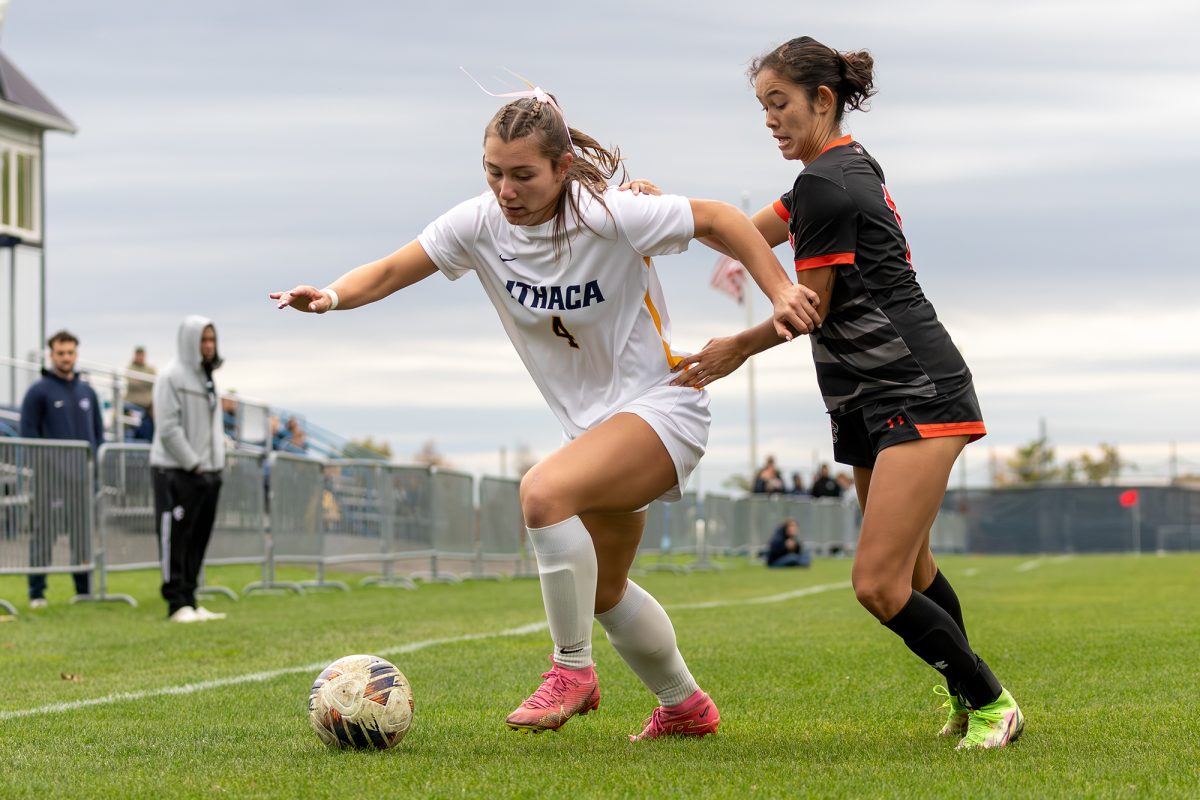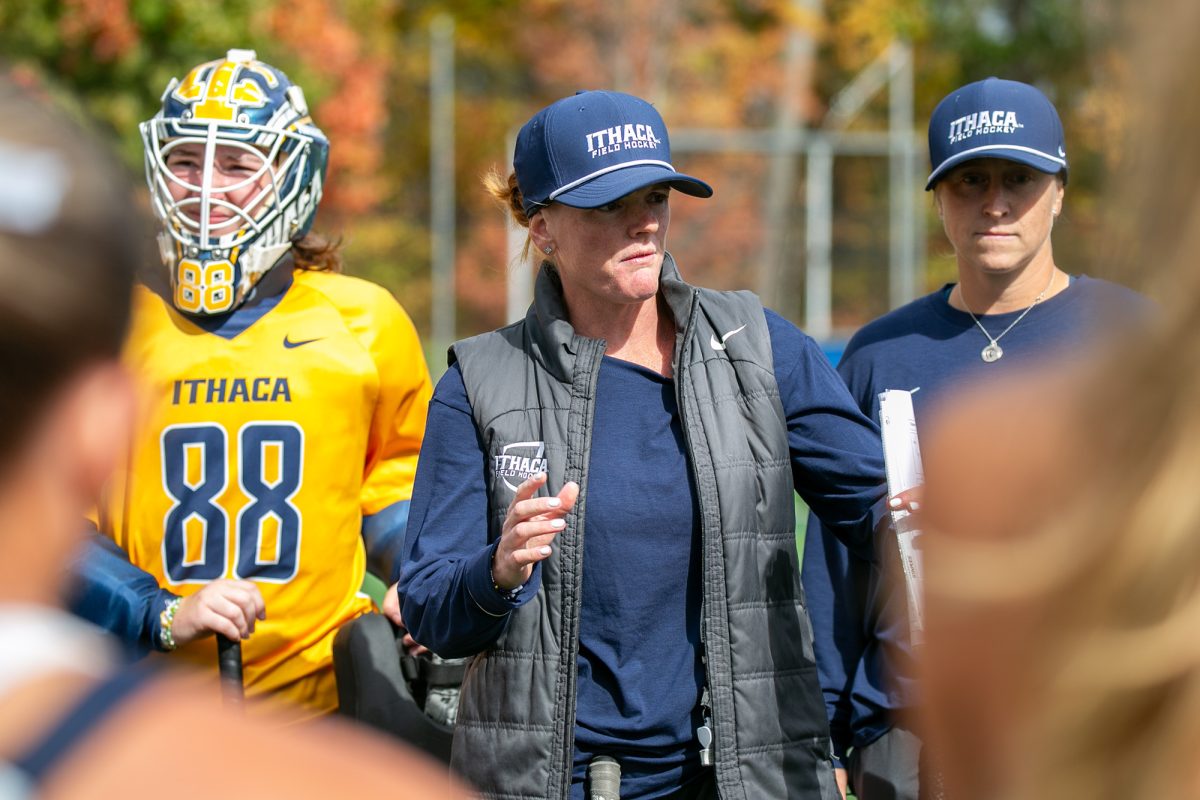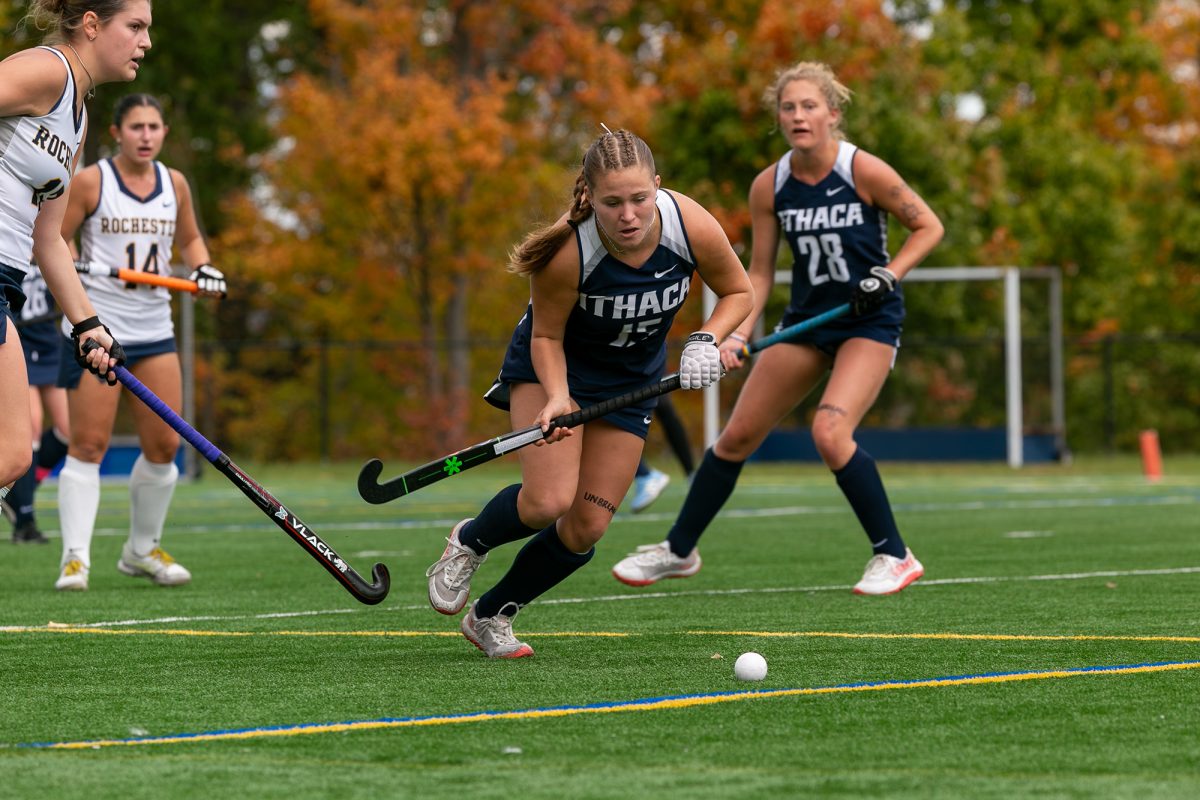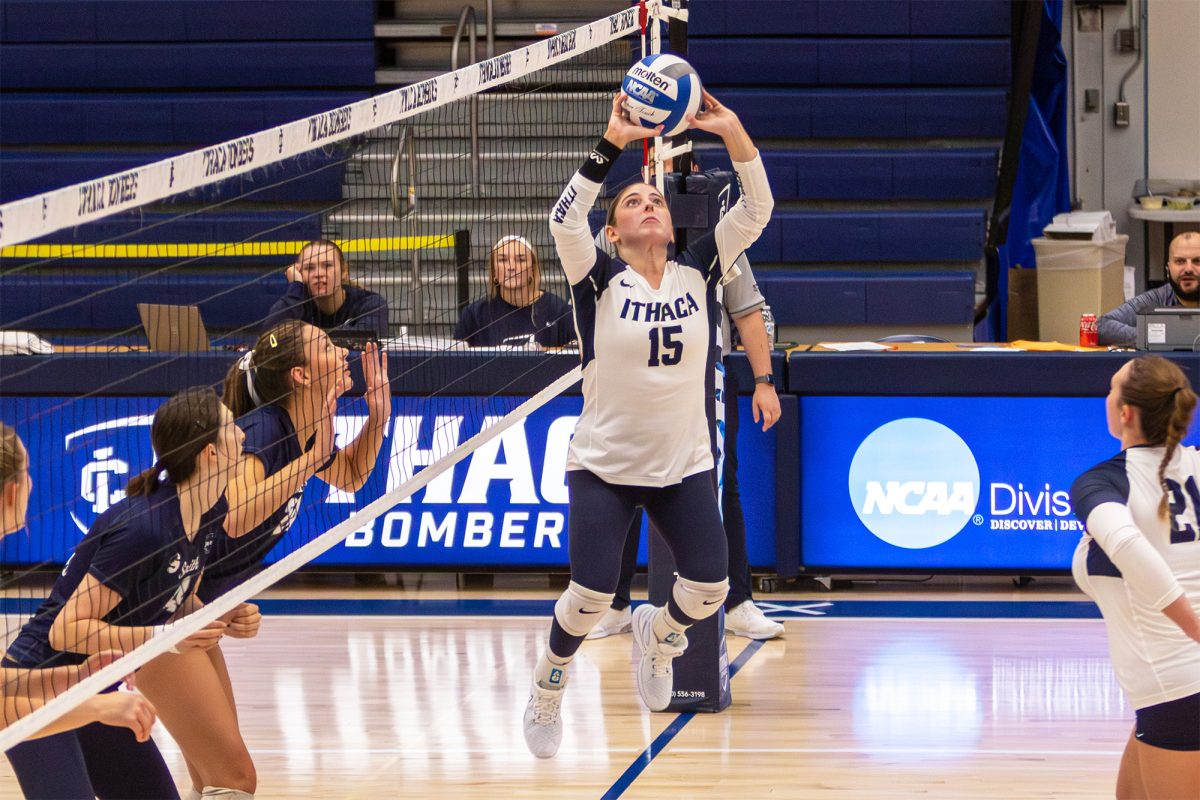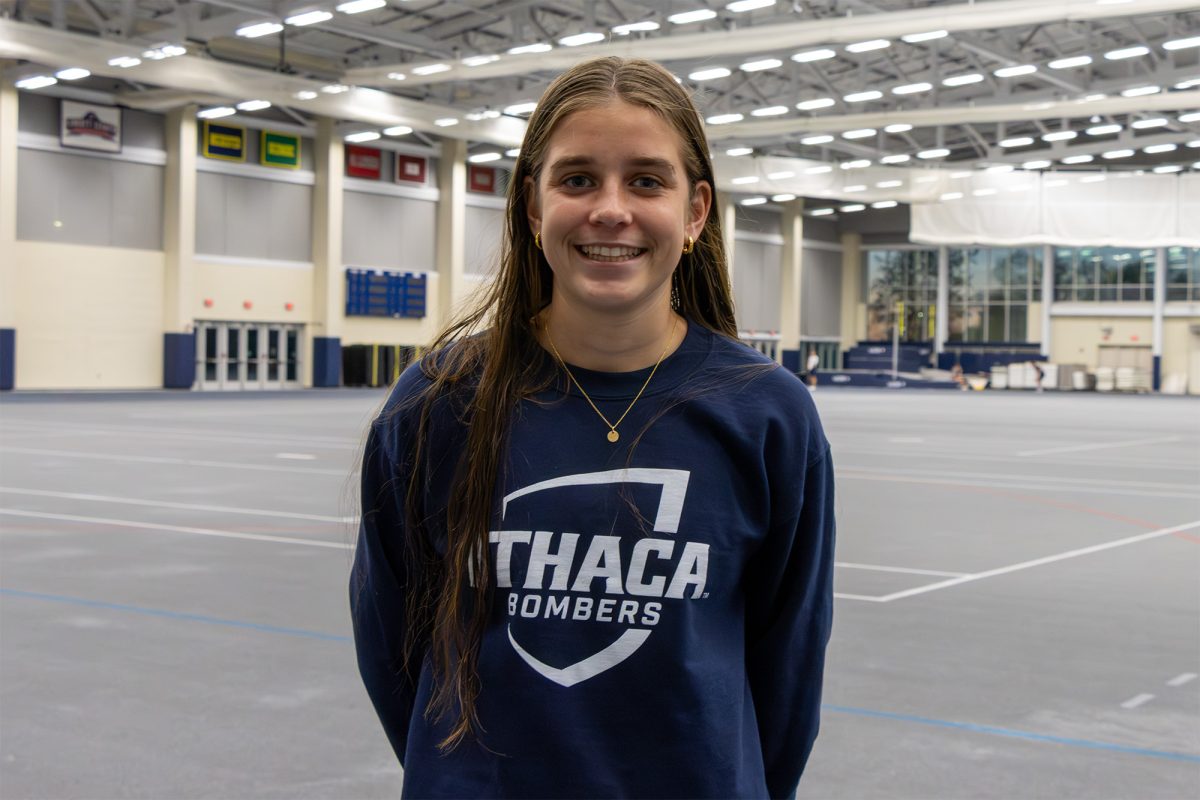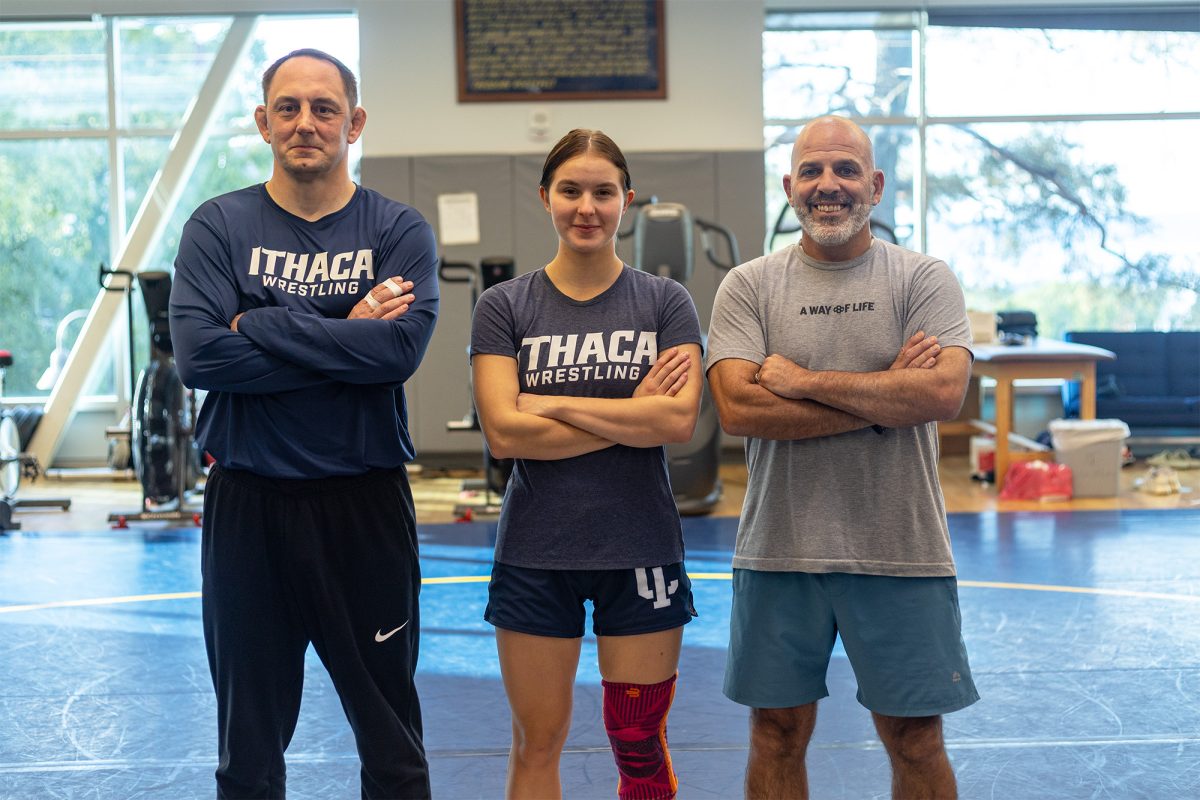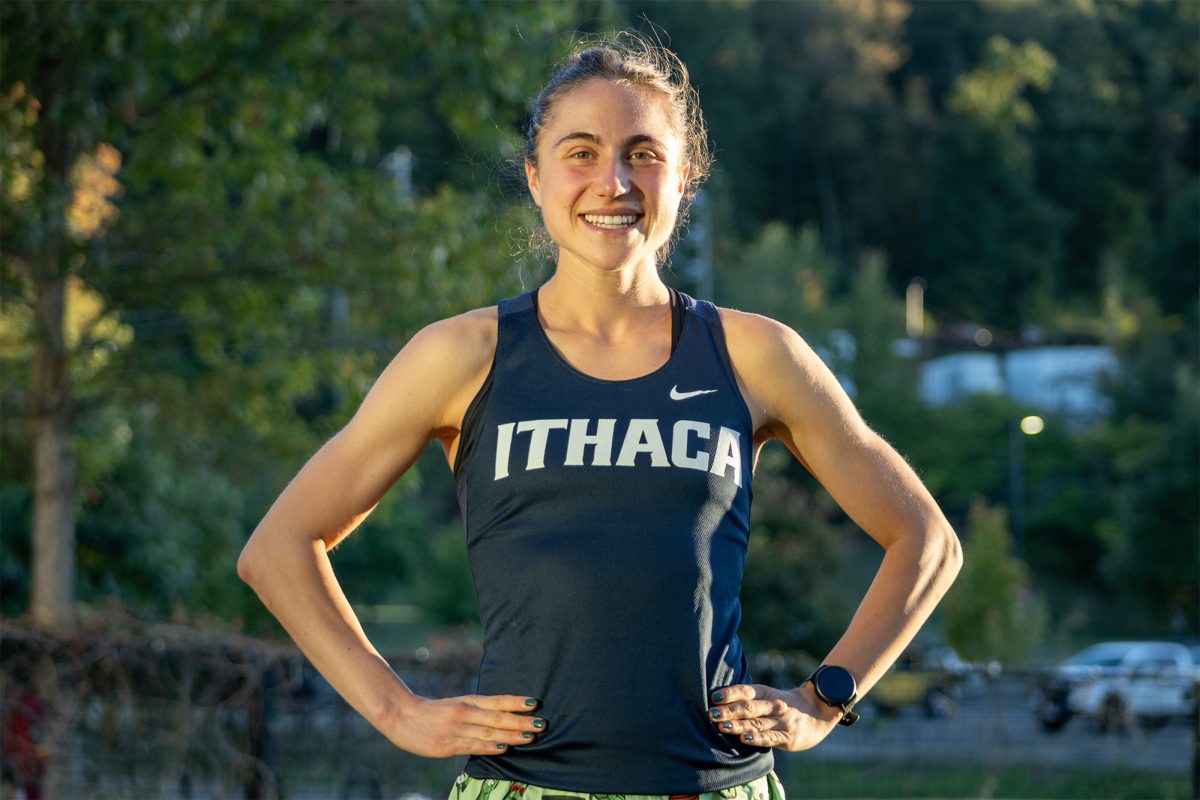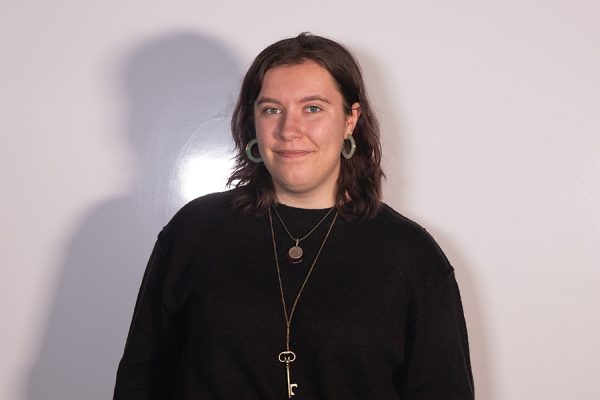This season, the Ithaca College baseball team’s winter practices featured a unique addition. The team had their normal hitting and fielding stations, but this year, there was a new station at practice — the FITLIGHT reaction time training system.
So far, this seems to be leading to success as the Bombers post a 22–9 record and are 11–4 in Liberty League competition. This can be illustrated in the squad’s ability to work the count this season. Sophomore outfielder Matt Curtis said the team has made big strides in the department compared to last season.
“The most important thing is to work the [ball] counts,” Curtis said. “I think we’ve done that better than last year.”
The project was coordinated by professors in the Department of Physical Therapy, Barbara Belyea ’82 and Tim Reynolds ’14. The two were joined by graduate physical therapy students Kiley Mabus and Elie Kuhne, along with senior physical therapy student Clare Sunderland.
Belyea, mother of assistant coach Cooper Belyea ’15, said the experiment was conducted over a five-week period during the winter, and the group would meet with the baseball team once a week using the FITLIGHT reaction time training system.
Belyea said they used five lights and set them up in an X-shaped pattern on a table. Each player would watch the lights and when they flashed a red light, the player would tap it as fast as they could. The goal was to tap all five lights accurately and as quickly as possible.
Over the course of the five weeks, the average time it took for the Bomber position players to tap all five lights improved significantly. Belyea said the average time decreased from .432 seconds to .368 seconds in just five weeks. Belyea said that in theory, this gives players more than enough time to react to the average Division I fastball of 93 miles per hour.
“If it’s a 93 mile per hour fastball, you have about 0.4 seconds to react,” Belyea said. “So average, they all got below what they should need.”
Curtis said the whole team enjoyed the reaction time project. He said the team made a competition out of it, which helped build team chemistry. When the season came around, Curtis said he felt more comfortable hitting outside with the reaction time training under his belt.
“You feel like the ball is so much bigger; you see the spin so much easier,” Curtis said. “Especially when you worked on reaction time and then also mix that with hitting off pitchers inside.”
Individually, Curtis is having a strong season at the plate, and his stats certainly reflect the reaction time training he has done. His strikeout-to-walk ratio has gone from a 4-to-1 in the 2023 season to 1.375-to-1 thus far in the 2024 season.
Belyea said that while they saw positive results, she would like to incorporate reaction time training over a longer period of time in the future.
“Maybe more than five weeks would have been better. Most evidence shows that neurological kinds of training, which this is … six weeks is kind of a minimum — to improve reaction time — but we saw really good improvement,” Belyea said.
Reynolds, a past member of the Ithaca College baseball team, said that one of the challenges that the group will face is to figure out which offensive metric to look at to find correlation. He says that a stat like a batting average could be misleading because of the luck involved in baseball. He says the group is still discussing which metrics they want to use.
“What we are possibly considering is a strikeout to walk ratio or an on base percentage associated with that and see if there’s any sort of correlation between those findings,” Reynolds said.
Kuhne played club baseball during his undergrad years at the college and was a captain of the team. He said the project was made much easier because of the buy-in from head coach, David Valesente, who was motivated to incorporate reaction time training.
“[Valesente] is highly motivated to look into stuff like this,” Kuhne said. “He had said before that when he was playing professional baseball, that they would train reaction time. … He’s invested in this.”
Kuhne said he and the rest of the group involved in the project made their first attempt at using the FITLIGHT system last year. They tested both the baseball and softball team but were not able to get any significant results from the study. Kuhne said he is grateful for the baseball’s team’s commitment to put in more time this year to train reaction time.
The group hopes to continue this work in the future. Belyea, who is a former faculty athletic representative on campus, said that being able to combine learning in the classroom and learning in athletics is something that will enhance the overall experience for both parties.
“I think it’s great when our student athletes get to experience and perhaps improve and benefit from some of the things that our students are learning in the classroom,” Belyea said.
Belyea said she also hopes to make the training more specific to baseball by simulating pitching. This is something that the group attempted to do last year by setting up the FITLIGHTs on a baseball tee and having the batters mimic swinging when the light flashed. She hopes to combine this method with VR to enhance the training.
As for Kuhne and Mabus, they both enjoyed their experience working on the project and both said they would enjoy doing further research in the sports of baseball and softball. Mabus said this project was a great stepping stone for her career in physical therapy.
“It’s fun to be involved in baseball or hopefully softball in the future,” Mabus said. “This is a great way to do that.”
Reynolds said this project was a great way to incorporate light reaction time training into the baseball program as well as get more physical therapy students involved in athletics.
“It was a win-win situation for everybody,” Reynolds said. “It’s nice to tie over the academics and athletic side of things.”


